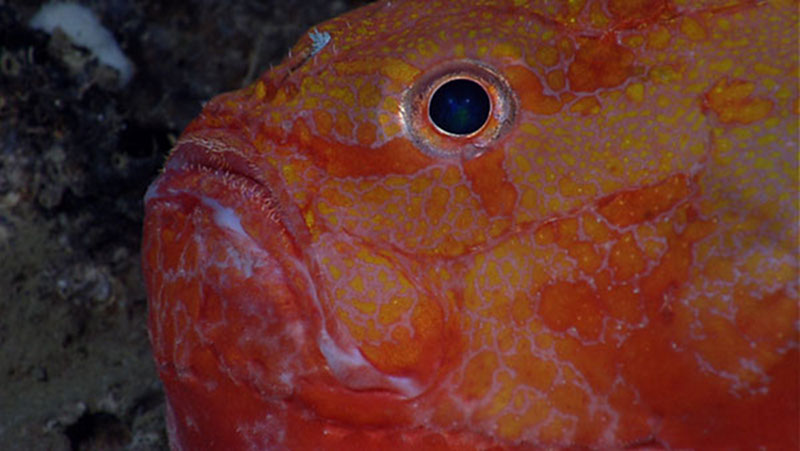
By Jeremy Potter, Expedition Coordinator - NOAA Office of Ocean Exploration and Research
March 23, 2012

If the fire on shore had affected Okeanos Explorer VSAT communications, telepresence operations would have come to a screeching halt. None of the undersea footage – including images of these deep sea fish – would have made it back to scientists on shore. Image courtesy of the NOAA Office of Ocean Exploration and Research, Gulf of Mexico Expedition 2012. Download larger version (jpg, 740 KB).
Early yesterday morning an electrical fire at a NOAA headquarters building caused havoc for a number of friends and colleagues. What most of them probably didn’t realize is that the fire also knocked out major communications mechanisms for all 18 NOAA ships. Well, all but one...

Early morning view from the ship. The VSAT and rescue boats are visible. Image courtesy of the NOAA Office of Ocean Exploration and Research, Gulf of Mexico Expedition 2012. Download larger version (jpg, 5.5 MB).
Word of the fire on shore quickly spread through the ship in the early morning. The Chief Electronics Technician – who had been trouble-shooting ‘strange’ communications issues – immediately called his shore-side contacts using a back-up phone line. It turned out that all other NOAA ships had lost VSAT communications; only Okeanos Explorer’s was still operational.
Highlights from the March 23 ROV dive. Video courtesy of the NOAA Office of Ocean Exploration and Research, Gulf of Mexico Expedition 2012. Download (mp4, 248.1 MB).
We were quite fortunate. The remotely operated vehicle (ROV) was already on the seafloor and we were communicating with our shore-side Science Team via video and audio sent over the VSAT. If our VSAT went down, all communications with the Team would come to a screeching halt. Tim Shank, on board Science Team Lead, explained the potential scenario to his Team on shore. If the VSAT went down and their feeds went dark, the Okeanos Explorer would continue operating autonomously until the connection was restored.

A collage of images from the Okeanos Explorer Control Room and ROV systems. Image courtesy of the NOAA Office of Ocean Exploration and Research, Gulf of Mexico Expedition 2012. Download larger version (jpg, 1.3 MB).
Fortunately, it never happened. The VSAT connection was stable throughout the day.
Only later did we fully understand why we never lost the signal. It turns out that the ship’s data pathway on shore goes through a different route than all other NOAA vessels. While implications of the fire had major impacts for other ships, impacts to the Okeanos Explorer were relatively minor.